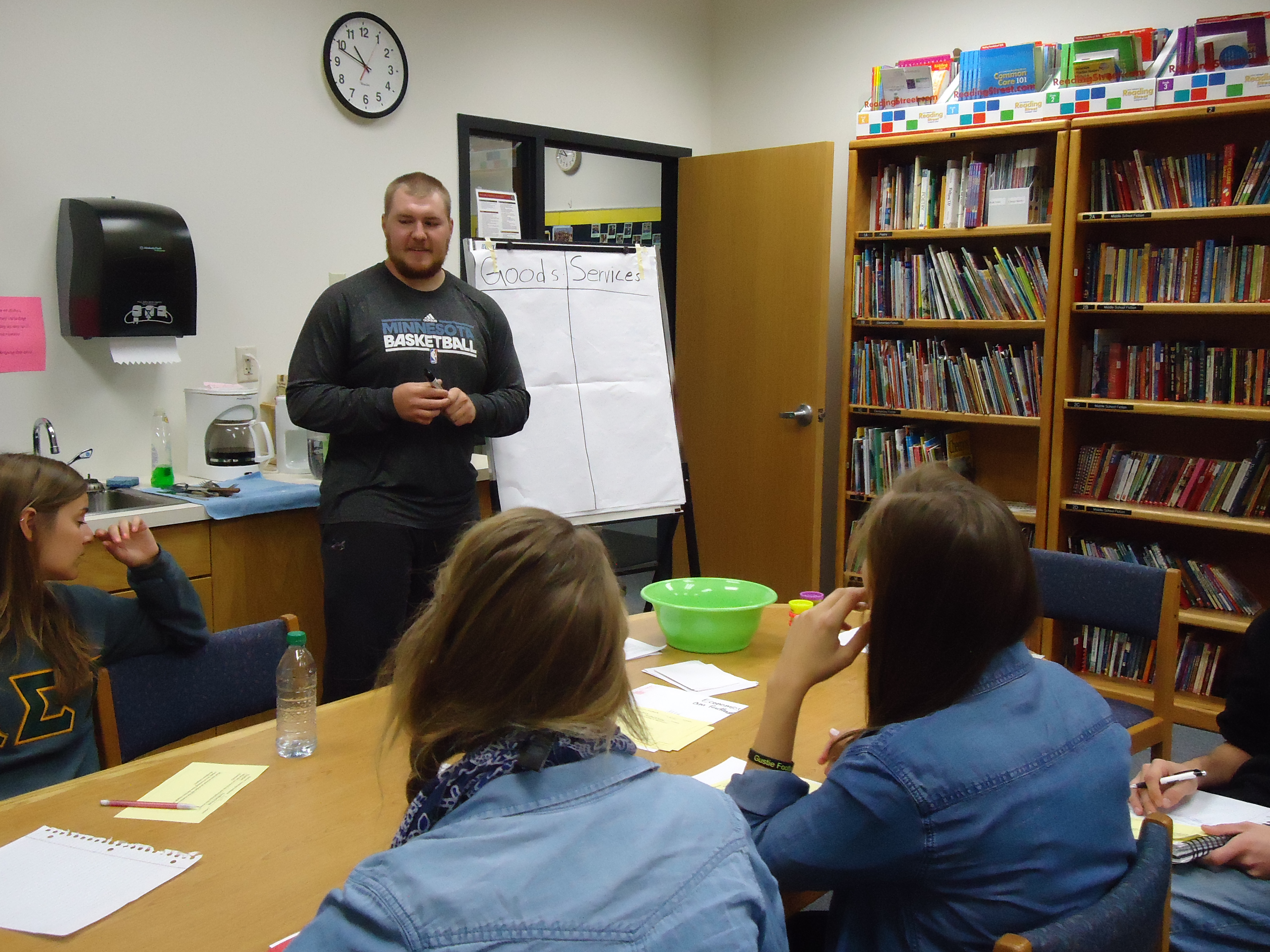 This was the initial lesson plan we put together. We found the idea for in the resources that Valerie provided for us. In the lesson we defined the words “goods” and “services”. We then had students give examples of each of them, and we put those examples on a t-chart. Next we had the students use playdough to create their own “goods”. We gave them 3 minutes to complete their good, and then had the others guess what they had made. Next we had them act out a “service” while the other students guessed what they were doing. We then discussed the difference between providing a service and making a good.
This was the initial lesson plan we put together. We found the idea for in the resources that Valerie provided for us. In the lesson we defined the words “goods” and “services”. We then had students give examples of each of them, and we put those examples on a t-chart. Next we had the students use playdough to create their own “goods”. We gave them 3 minutes to complete their good, and then had the others guess what they had made. Next we had them act out a “service” while the other students guessed what they were doing. We then discussed the difference between providing a service and making a good.
I liked this lesson, because by making students use a hands on approach to the difference between goods and services, you could tell they were really thinking about it and learning. One thing teachers should think about when teaching this lesson, is that you sometimes need to prompt students on examples of services, since this concept is just a little more difficult to grasp.
I think that the lesson on goods and services was very well put together. Josh did a nice job of giving us visual aids (t-chart) to help us better understand what we were learning. I also really liked how you incorporated the activity where we come up with a skill, and then create the good and talk about the service. This is a great way for the students to get very creative in thinking about the relation of the good and the service in a particular skill area. Great job economics group!
I thought that this lesson was well planned out. The play-dough was a good manipulative because the teacher could assess understanding through a fun art project. We were able to show what we learned through our creative side. I like how my economy teacher explained what services and goods are through interactive learning. We were able to come up with different examples as a class at first but then we were asked to each think of one service and one good that went hand in hand. We were not able to “act out a service” because we ran out of time, but I like this idea because it is a unique way of assessing students. Not all students should be assessed through art projects, others may feel inadequate to be assessed through written answers, therefore I like the fact that there were multiple ways the teacher could see success.
I think that this lesson really helps to solidify the difference between goods and services if it is done well.I really enjoyed working with the play dough and allowing the students in the lesson to be creative and use a little bit of imagination to create some different goods and act out some different services! I think that the most difficult part of teaching this lesson is to make sure that there are no misconceptions about the terms and what they mean. It is really important to be intentional with students about how you are teaching these concepts, and that is something that I will want to keep in mind if I were to teach this lesson again.
I really enjoyed both of these lessons for economics. It made economics really fun to learn and I loved using manipulatives with these lessons. I really enjoyed the book that you used for the second lesson and using the coins and following along with the book. Lauren did an excellent job with teaching this lesson. She taught this extremely well and kept our group well engaged. In the first lesson I really enjoyed the T chart with goods and services. I enjoyed that there were examples of goods in the bowl that the students could draw and generate ideas.
I also enjoyed teaching this lesson because it was very hands on; play dough is a great manipulative to incorporate in to a lesson. However, the concept of goods and services can be difficult to teach. If I were to teach this lesson again I would be sure to use more clear and direct examples of the differences between the two. This lesson has a lot of potential if executed properly.